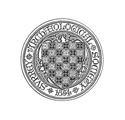Surrey Archaeological Collections
Surrey Archaeological Society, 2003. (updated 2023) https://doi.org/10.5284/1000221. How to cite using this DOI
Data copyright © Surrey Archaeological Society unless otherwise stated
This work is licensed under the ADS Terms of Use and Access.
Primary contact
Surrey Archaeological Society
Research Centre
Hackhurst Lane
Abinger Hammer
Surrey
RH5 6SE
Tel: 01306731275
Resource identifiers
- ADS Collection: 379
- DOI:https://doi.org/10.5284/1000221
- How to cite using this DOI
Excavations at Park Row, Farnham, Surrey: a Medieval pottery kiln
GEOFFREY H COLE
The general scatter of post-medieval material across the site, together with the royal farthing token of James I – Lennox type (1614-1625) would appear to belong with the use of the Andrew Windsor Almshouses after AD 1619. The discernible features, consisting of pits, a pottery kiln and an inhumation burial, were however of medieval date and suggest that this area of the medieval town, between the town enclosure and the castle, had been used for the production of pottery products. A continuation of the general scatter of medieval and post-medieval pottery has been noted in gardens to the south-east of the site, which may indicate that the pottery production was not limited to one kiln in this area. No evidence was found for any form of building on the site.






